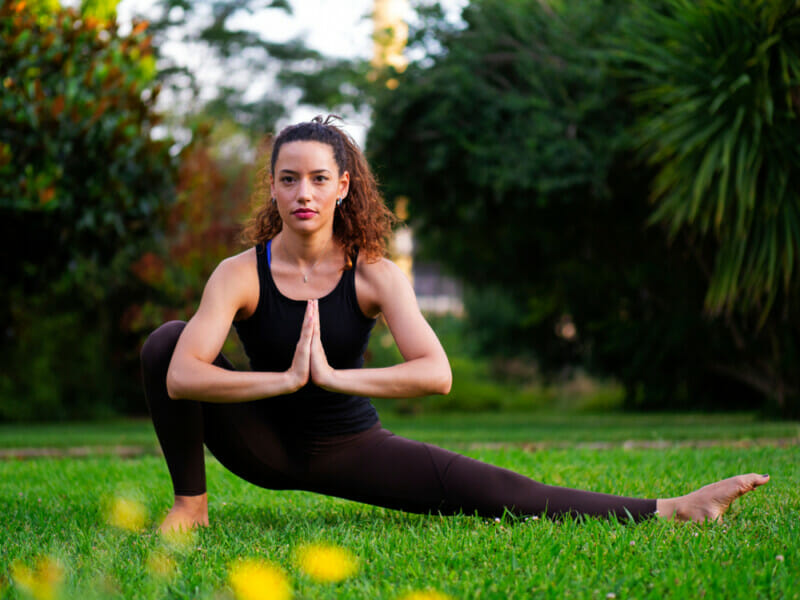Mistakes to Avoid While Performing a Lunge Pose
There are a few essential yoga poses, also known as “asanas,” that are integral to any yoga practice. Besides popular poses like child’s pose, cat-cow, and downward dog, lunges play a crucial role in yoga routines. In this episode of The Right Way, Pilin Anice, a yoga instructor and MIRROR trainer, demonstrates the correct way to execute a high lunge pose (or “ashta chandrasana,” which translates to crescent high lunge pose) to ensure a strong foundation in your yoga practice.
The lunge pose challenges your entire body, with a significant emphasis on your legs. Anice explains, “High lunge pose is excellent for strengthening your lower body. It helps build strength and endurance in the quadriceps, hamstrings, and hip flexors. When done correctly, it becomes a very dynamic pose.”
However, executing ashta chandrasana involves multiple components, and any incorrect movements can lead to tension and discomfort in your body, which is not the goal. Anice highlights three common mistakes that practitioners often make while performing the lunge pose.
The incorrect approach: Leaning too far forward
One common mistake observed by Anice is individuals leaning excessively forward during their lunge. This disrupts the body’s balance, causing the front leg to bear most of the weight. To ensure both legs are actively engaged, widen your feet until you feel grounded, and adjust your weight distribution evenly between the front and back foot.
The incorrect approach: Pelvic tilting
“The second common mistake involves tilting the pelvis forward or backward, rather than maintaining a neutral position, leading to strain in the lower back,” Anice mentions. Instead of allowing your pelvis to tilt, engage your core to support your spine. Placing your hands on your hip points can assist in aligning your pelvis neutrally, although it may increase the pose’s difficulty.
The incorrect approach: Incorrect shoulder alignment
Anice frequently observes individuals lifting their shoulders too high and resembling “earrings” when extending their arms overhead. This action compresses the neck and shoulders, adding unnecessary tension, especially to an area already stressed by activities like text neck. To alleviate this, relax your neck by lowering your shoulders and retracting your shoulder blades like wings.
Remember to watch the full video to evaluate your ashta chandrasana alignment, and then seamlessly transition into your next yoga flow.
















